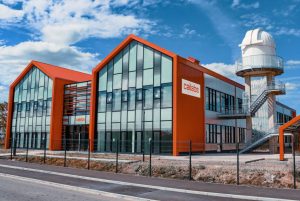Flying further with beam shaping
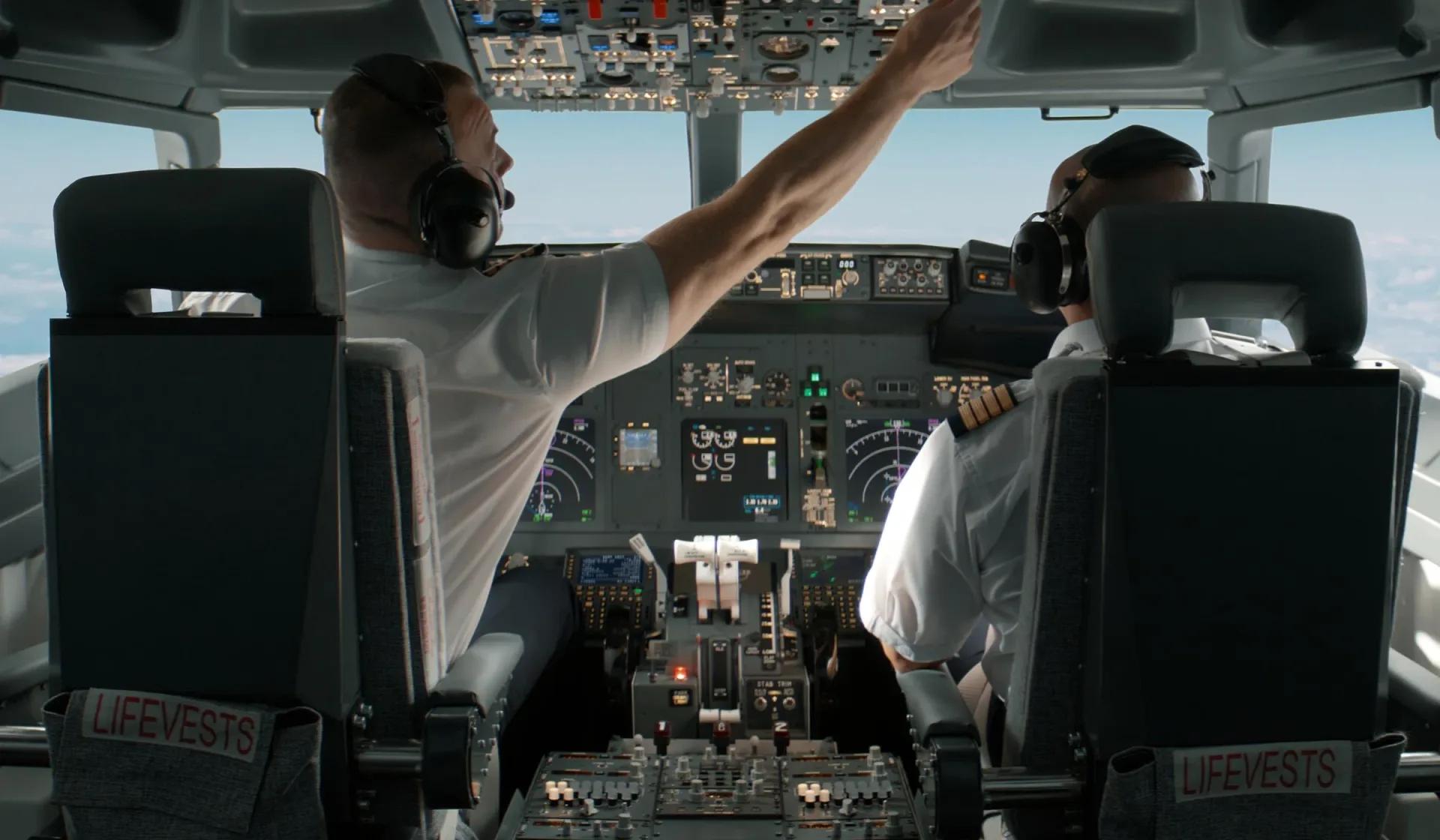
The aerospace industry is facing numerous challenges as it strives to meet the growing demands of air travel. One of the most pressing challenges is the need to reduce carbon emissions, as aviation is a major contributor to global greenhouse gas emissions. In addition to this, there is a growing demand for increased connectivity, as passengers and crew members require faster and more reliable access to information and communication services while in flight. Finally, the industry is also focused on improving safety through improved navigation, as accidents and incidents continue to occur despite advances in technology.
Laser technologies have been used in the aerospace industry for decades, with applications ranging from manufacturing aircraft components with precision, maintaining engines, communication, and navigation. Despite the numerous applications of laser technology in the aerospace industry, there is still room for improvement in terms of efficiency, reliability, and safety. This is where beam shaping technology, and in particular Cailabs’ Multi-Plane Light Conversion technology, can play a major role. In this article, we’ll take a closer look at how beam shaping can revolutionize the way aircraft fly. We’ll explore the current challenges facing the industry, the role of laser technologies, and the specific applications of beam shaping in manufacturing, connectivity, and navigation.
Beam shaping and spatial multiplexing: Cailabs’ applications in an airplane
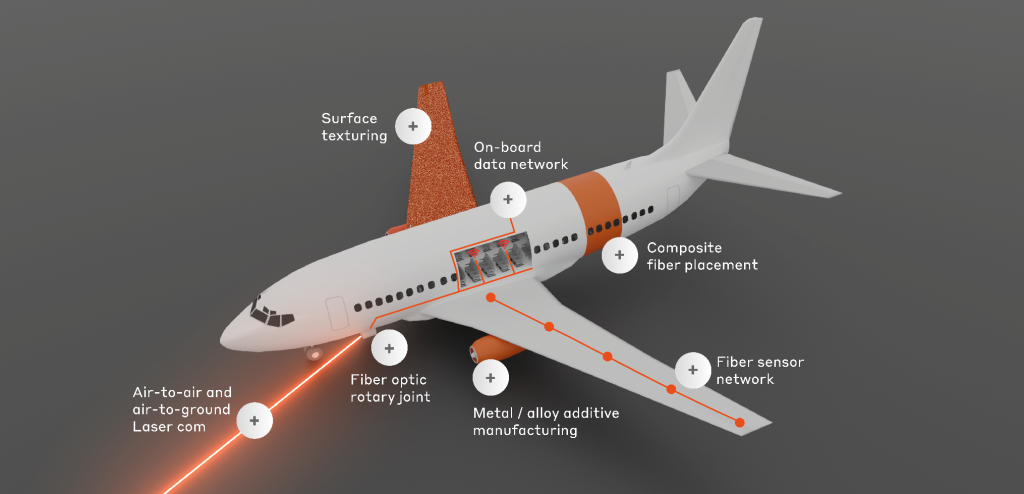
The Challenges of the Aerospace Industry
First, let’s talk about the challenges facing the aerospace industry. One of the biggest ones is reducing carbon emissions. According to the International Air Transport Association (IATA), aviation accounts for about 2.5% of global greenhouse gas emissions. That might not sound like a lot, but it’s a significant contributor to climate change. To address this, the industry is working on developing more fuel-efficient planes, exploring alternative fuels, and implementing operational changes that reduce emissions.
Another challenge is improving connectivity. In today’s world, passengers expect to have access to Wi-Fi, streaming services, and other amenities during their flights. However, providing reliable and fast internet access at 10 km altitude can be a real challenge. The industry is working on developing new technologies that can improve connectivity and make in-flight entertainment more enjoyable for passengers.
Finally, safety is always a top priority. While air travel is already incredibly safe, the industry is constantly looking for ways to improve navigation and avoid accidents. This includes developing better weather monitoring systems, improving communication between pilots and air traffic control, and investing in new technologies that can improve navigation in low visibility conditions.
Laser Technologies and Beam Shaping in Aviation
Laser technologies play a crucial role in the aerospace industry. They’re used for a wide range of applications, from manufacturing aircraft components with precision to maintaining engines and even communication and navigation. Lasers offer a level of accuracy and efficiency that’s hard to achieve with other technologies, making them an essential tool in the industry. But there’s still a lot of room for improvement in terms of efficiency and safety, and that’s where beam shaping technology comes in.
Beam shaping technology is all about manipulating the shape, meaning the intensity and phase pattern of light beams. It can be used in a variety of applications, from manufacturing to communication to sensing. Cailabs’ core technology is Multi-Plane Light Conversion, which allows the shaping of light beams into complex and precise patterns. It is also able to shape multiple beams simultaneously into copropagating spatial modes, namely Spatial Mode multiplexing. This technology has a wide range of applications in the aerospace industry and can help to improve many aspects of aircraft performance.
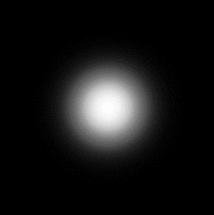
Improved Manufacturing with Beam Shaping
One of the main challenges facing the aerospace industry is the need to reduce its carbon footprint. Aircraft are known to be one of the biggest polluters, emitting large amounts of CO2 and other greenhouse gases into the atmosphere. As the demand for air travel continues to increase, there is a growing need for the industry to find ways to reduce its environmental impact.
One way to achieve this is through the use of lighter materials, such as composites, in aircraft manufacturing. These materials are stronger and lighter than traditional metals, allowing for reduced fuel consumption and lower emissions. By shaping the light beams used to position the fibers, it is possible to achieve more accurate placement, which can improve the structural integrity of the aircraft while reducing weight.

Another technique is surface texturing, which is the process of creating patterns such as riblets on the surface of the aircraft to improve its aerodynamic performance. By shaping the light beams used to create the patterns, it is possible to achieve more precise and efficient texturing, which can reduce drag and improve fuel efficiency.
Finally, lasers are used for laser additive manufacturing, which is a process where 3D parts are built layer by layer using lasers. By shaping the laser beam, it is possible to create more complex and precise parts, which can be lighter and more durable than those made using traditional manufacturing methods. Beam shaping can also enable processing of metallic alloys that cannot be manufactured with unshaped, Gaussian beams.
The improved manufacturing capabilities enabled by beam shaping can lead to more efficient, lighter, and more durable aircraft, which are essential to improving fuel efficiency and reducing the environmental impact of aviation.
Improved Connectivity Services with Spatial Mode Manipulation
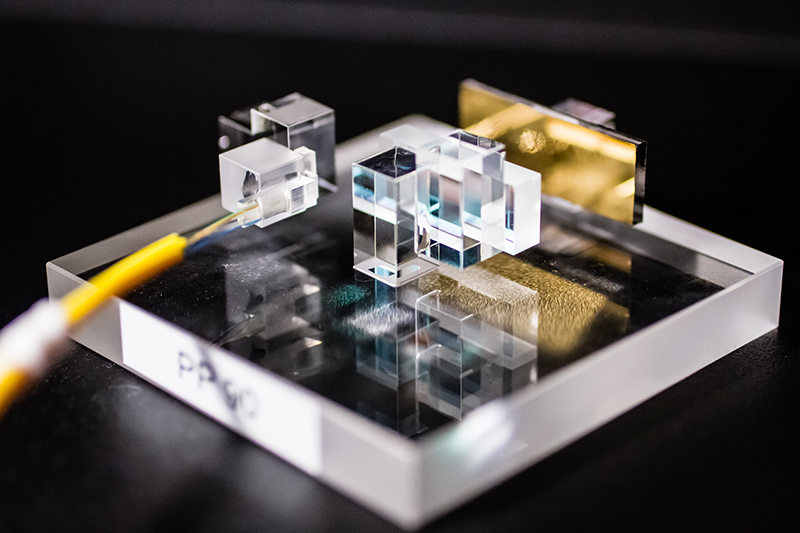
Another area where beam shaping can make a big difference is in connectivity services. For example, Cailabs’ technology can be used to increase in-plane communication capacity through space division multiplexing. By using Multi-Plane Light Conversion, it is possible to shape laser beams to create multiple channels of communication within a single optical fiber, increasing the amount of data that can be transmitted inside an aircraft. This can lead to faster and more reliable in-flight entertainment and other communication services for passengers and crew members.

Beam shaping can also be used to enable laser communication through turbulence mitigation. While laser communication offers higher bandwidth than traditional radio communication, it suffers from atmospheric turbulence, making it difficult to maintain a reliable connection. By shaping the light beam with Multi-Plane Light Conversion to compensate for the effects of turbulence, it is possible to maintain a stable and reliable connection, even in challenging conditions. That means more data can be transmitted faster and more reliably, so you can enjoy better internet access and faster streaming services on your flights.
Improved Navigation with Beam Shaping and Spatial Mode Multiplexing
Finally, beam shaping can also be used to improve the navigation of aircraft. For example, Cailabs’ technology can be used to improve the connectivity of optronic pods through space division multiplexing. This means that multiple sensors can be integrated into a single pod, improving the accuracy and efficiency of the navigation system.
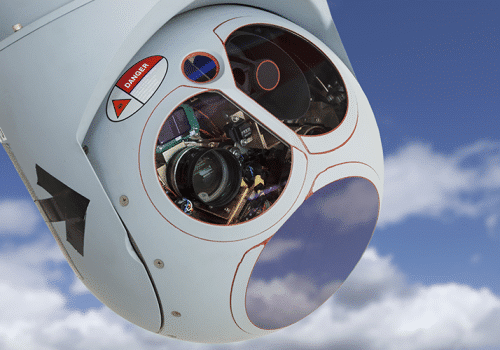
Spatial mode multiplexing can also be used for distributed fiber sensing, which can provide real-time data on temperature, pressure, and strain in different parts of the aircraft. This data can be used to monitor the health of the aircraft and identify potential issues before they become serious problems. The use of multiple spatial modes enables the rapid and simultaneous investigation of multiple phenomena.
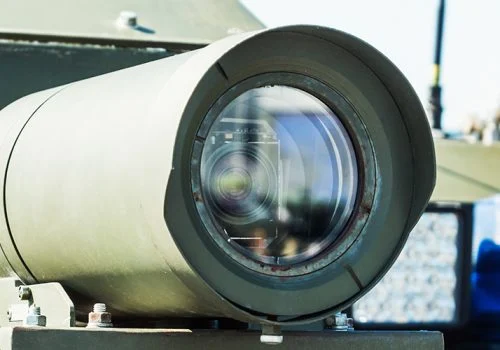
Laser technologies are also used for lidar, which stands for Light Detection and Ranging. This remote sensing technology uses lasers to measure distances and create 3D maps of terrain, which can be incredibly useful for navigation and avoiding obstacles. Beam shaping can increase the range and robustness of LiDAR measurements, by better mapping the field of view or improving the measurement through atmospheric turbulence.
Improved navigation capabilities enabled by beam shaping can lead to safer and more efficient flights. By improving the accuracy of optronic pods and remote sensing, pilots can navigate more confidently in low visibility conditions, reducing the risk of accidents caused by collisions with obstacles. Furthermore, by improving the efficiency of lidar and distributed fiber sensors, it is possible to detect potential hazards and respond to them more quickly and effectively.

Conclusion
In conclusion, beam shaping technology, and in particular Cailabs’ multi-plane light conversion technology, offers tremendous benefits to the aerospace industry. By improving manufacturing, connectivity services, and navigation, beam shaping technology can revolutionize the way aircraft are built, operated, and flown.
As the aerospace industry continues to evolve and adapt to changing environmental, technological, and regulatory conditions, beam shaping technology will undoubtedly help us fly further, faster, and more sustainably than ever before. So the next time you’re cruising at 10 km height, take a moment to think about the incredible technology that will make your experience even better!

By Pu Jian
Pu Jian launched all Cailabs’ award-winning products and drives their go-to-market strategy. She leads the cooperation between Cailabs and its strategic partners. She holds a Ph.D. in quantum optics from the Ecole Normale Supérieure and the Université Pierre et Marie Curie.
Our Other Articles:
-

Exceeding Throughput Limits with Laser Communications
-
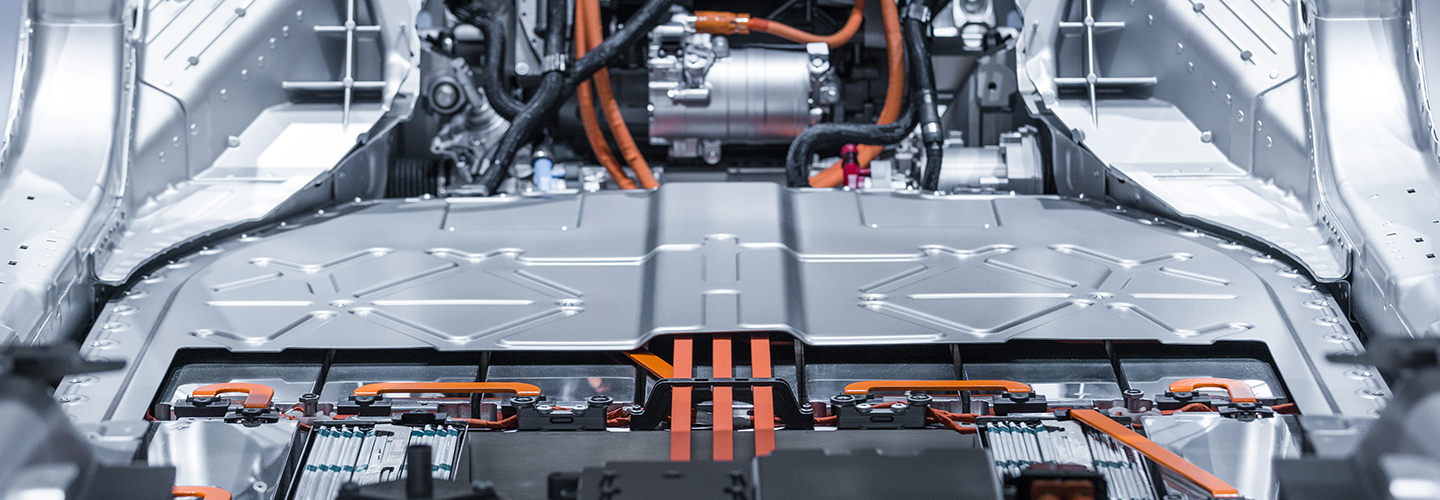
The challenges of e-mobility: Welding busbars
-
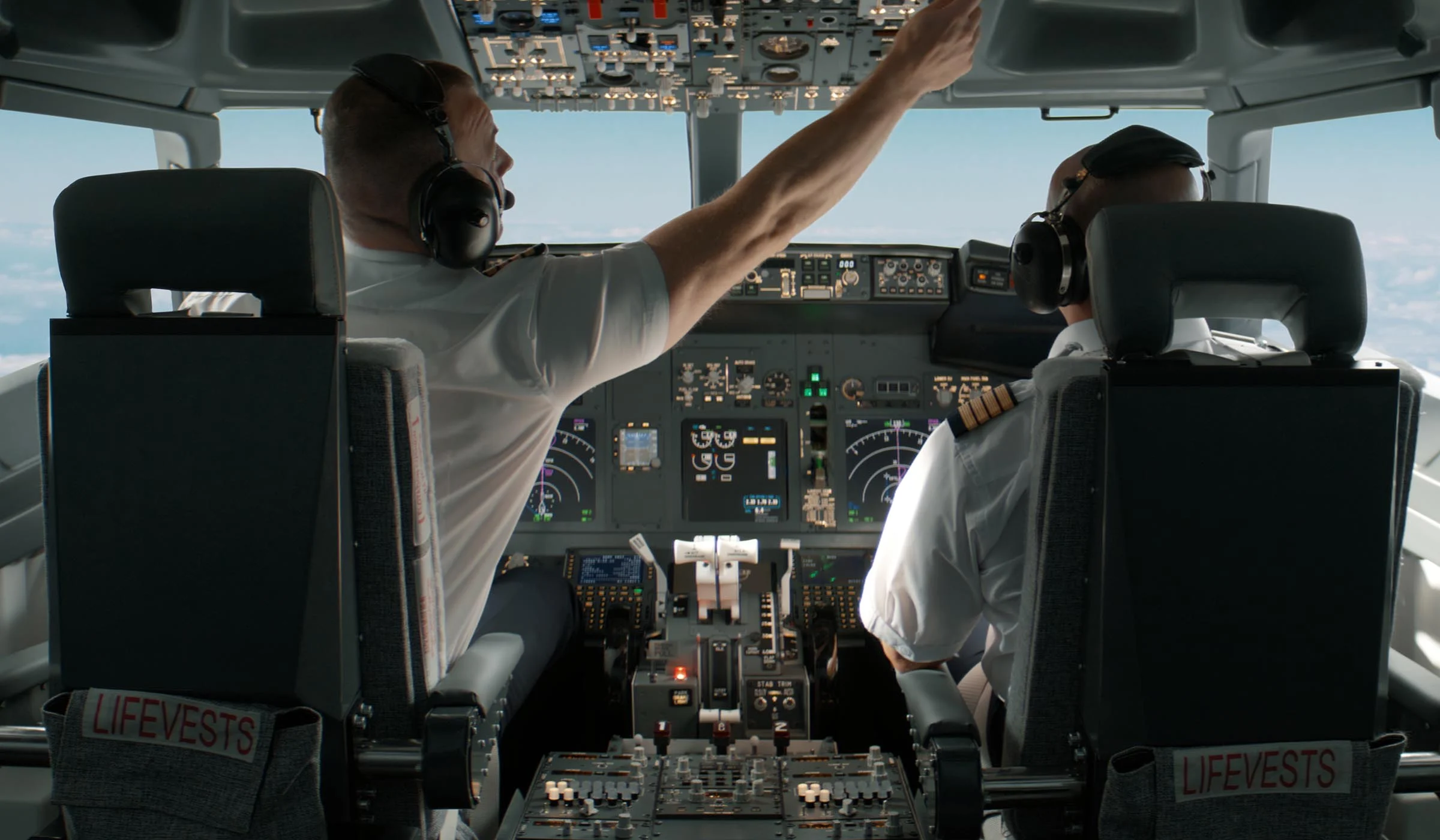
Flying further with beam shaping
-
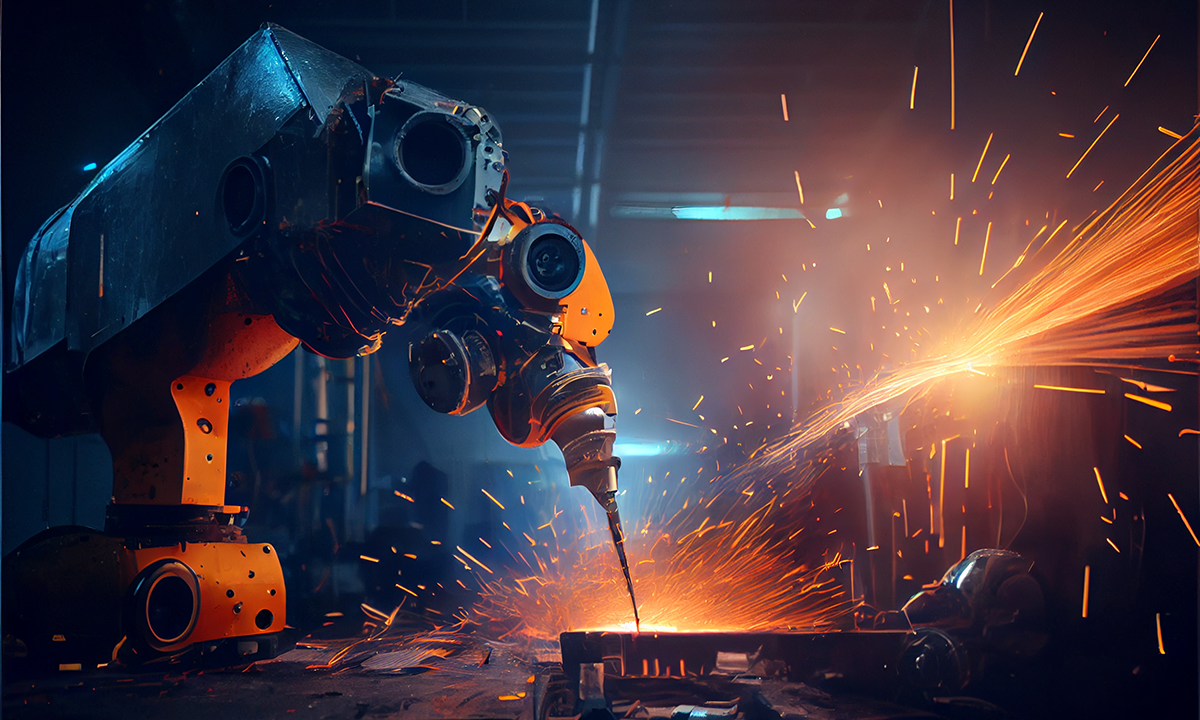
From the Volkswagen Golf to the Tesla Model 3: How Lasers Are Shaping the Automotive Industry?
-
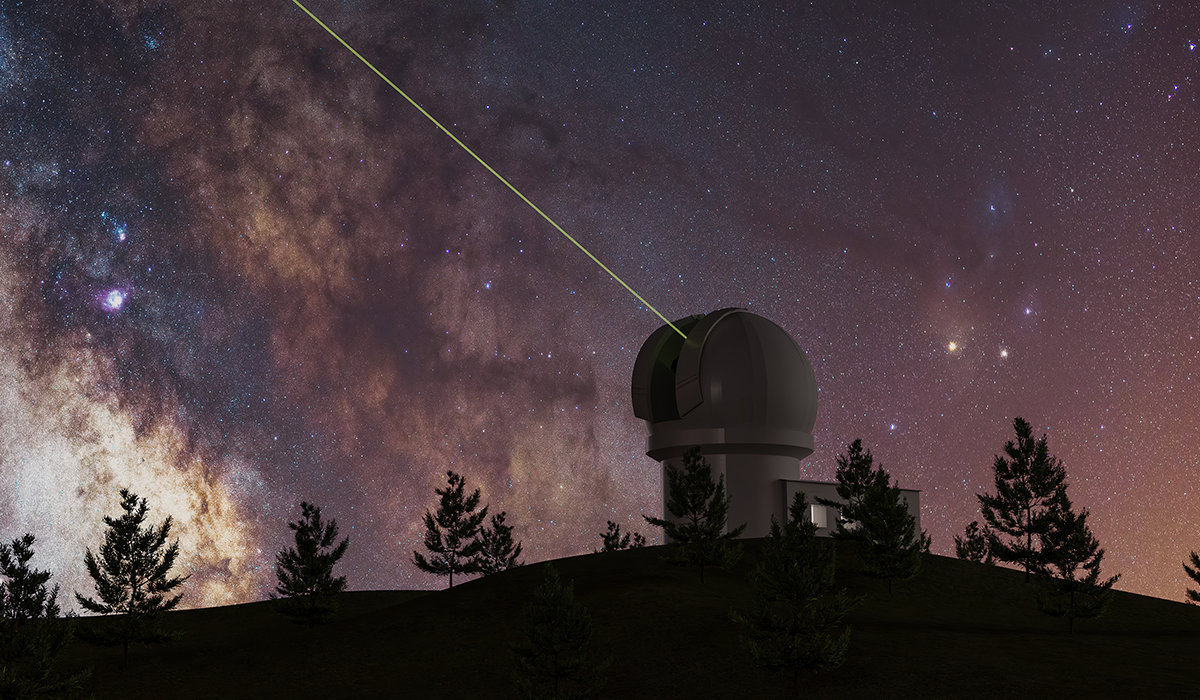
Space Optical Communications: Why Are Space-to-ground Links Taking Time to Develop?
